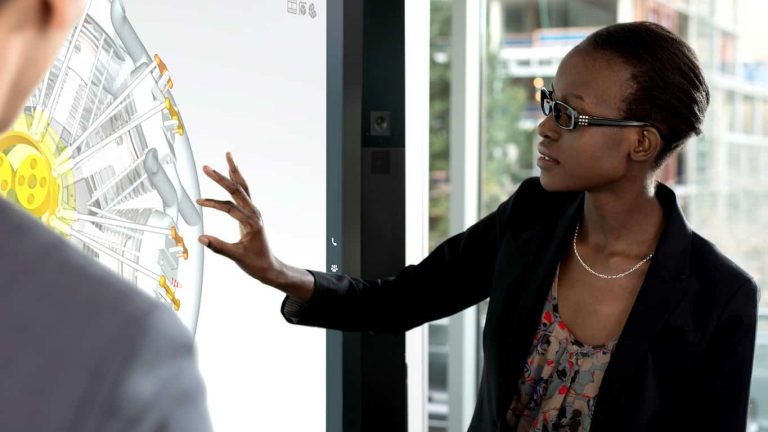A service offered by Microsoft that many are probably unaware of is their Disability Answer Desk which provides customer support for Microsoft product owners and service users who require more than a text chat or telephone call to help solve their problem.
Earlier this year, Microsoft added American Sign Language support to the Disability Answer Desk. This service is made possible through the use of a videophone and the user’s webcam or front-facing camera on their connected device.
This week at the TDI Biennial Conference in Baltimore, MD, Microsoft’s Jenny Lay-Flurrie spoke about the company’s ASL support services and how important providing such support is and in a recent blog post, reiterates her thoughts on the subject. “For the more than 38 million Americans that have hearing problems, these types of services not only facilitate communication access, but also potentially increase employment opportunities for deaf, hard of hearing and speech impaired individuals.”
She continues, “We believe that technology can and should be empowering to people, and we’ve seen how impactful this technology can be in the three years since we launched the Disability Answer Desk. Through technology, we can better support customers with disabilities and answer their questions regarding accessibility and assistive technologies such as screen readers, magnifiers and speech recognition software.”
It must be noted how unusual it is that it’s taken until 2015 for Microsoft to provide sign language support. Video conferencing technology is hardly new. As it stands though, very few companies offer this degree of support to their customers and it’s great to see Microsoft taking the lead and hopefully it will inspire others to do the same.
Microsoft’s Disability Answer Desk is available 24 hours, every day of the week in 11 countries however the ASL support is restricted to Monday through Friday from 8:30 a.m. to 5 p.m. in the U.S.A. only. One reason for this restriction is the fact that American Sign Language isn’t used internationally. Even within the U.S.A., Pidgin Signed English (PSE) or Signed English are also used as is Signing Exact English (SEE) while abroad there are numerous alternatives such as British Sign Language and Auslan (Australian Sign Language) which are specific to different regions and communities.
Is there a form of support that you would like to see introduced to your region? Let us know in the comments below.


